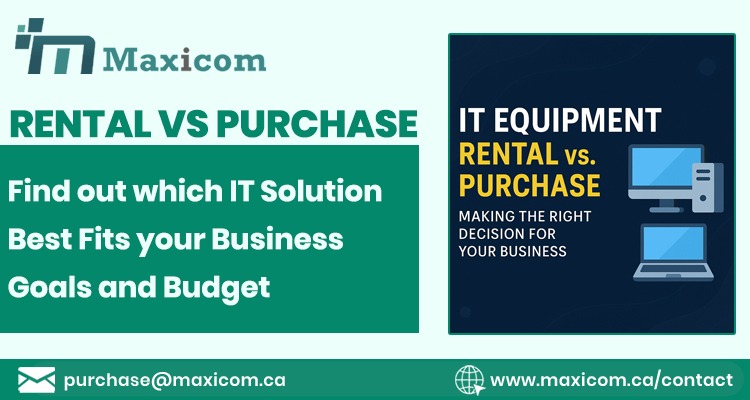As technology continues to evolve rapidly, businesses face critical decisions when it comes to acquiring IT equipment. Should you purchase the hardware outright, or is renting a smarter choice? Both options have unique advantages, and making the right decision depends on your company’s operational needs, budget, and long-term goals.
Understanding IT Equipment Purchase
Purchasing IT equipment means buying hardware such as servers, laptops, or networking devices outright, giving your business full ownership. This traditional approach offers control and long-term asset value but requires significant upfront capital investment.
Pros of Purchasing IT Equipment
- Full Ownership: Complete control over equipment use and configuration.
- Long-Term Cost Efficiency: Over time, owning equipment can be more cost-effective than repeated rentals.
- Asset Depreciation Benefits: Potential tax advantages through depreciation write-offs.
- No Usage Restrictions: Use the equipment as needed without contract limitations.
Cons of Purchasing IT Equipment
- High Initial Costs: Large upfront expenses can strain budgets, especially for startups or SMEs.
- Technology Obsolescence: Rapid tech changes may render purchased equipment outdated quickly.
- Maintenance Burden: Responsibility for repairs, updates, and technical support lies with the owner.
Understanding IT Equipment Rental
Renting IT equipment allows businesses to lease hardware for specific periods, ranging from months to years. This approach offers flexibility, access to updated technology, and reduced upfront costs.
Pros of Renting IT Equipment
- Lower Capital Expenditure: Avoid hefty upfront payments, improving cash flow.
- Flexibility: Scale IT resources up or down based on project needs or business growth.
- Access to Latest Technology: Rental providers often upgrade their inventory regularly.
- Included Maintenance & Support: Many rental agreements include technical support and repair services.
Cons of Renting IT Equipment
- No Ownership: Equipment must be returned, and there’s no long-term asset value.
- Potentially Higher Long-Term Cost: Continuous rental can be more expensive over many years.
- Contract Terms: Rental agreements may have restrictions on use and customization.
How to Choose Between Renting and Purchasing
Consider the following factors when deciding:
- Budget Constraints: If cash flow is tight, rental reduces upfront spending.
- Project Duration: Short-term projects benefit from rental flexibility.
- Technology Needs: Fast-evolving tech favors rental for regular upgrades.
- Asset Management: Owning suits businesses wanting full control over equipment.
- Maintenance Capabilities: Rental reduces internal IT burden with included support.
Conclusion
Both IT equipment rental and purchase offer unique benefits. Businesses must evaluate their financial situation, operational flexibility, and growth plans to make an informed choice. Renting can provide agility and lower initial costs, while purchasing builds long-term asset value and control.
If you’re unsure which option fits your business best, consulting with IT asset management experts like Maxicom can help tailor a solution aligned with your goals.
